

Review Article - Year 2022 - Volume 37 -
The Performance of Academic Leagues Linked to the Brazilian Association of Plastic Surgery Leagues
A atuação das Ligas Acadêmicas vinculadas à Associação Brasileira das Ligas de Cirurgia Plástica
ABSTRACT
Introduction: The Academic Leagues are non-profit autonomous civil and scientific student entities, of indefinite duration, which brings together medical students and professors. The Brazilian Association of Plastic Surgery Leagues (ABLCP) is an organization linked to the Brazilian Society of Plastic Surgery (SBCP), considered its academic segment, thus establishing the proximity between Academic Leagues of Plastic Surgery (PSL) and SBCP. The present study aims to describe the profile of the associated leagues.
Methods: This was a cross-sectional, descriptive, multicenter study with qualitative and quantitative approach through application of an online questionnaire with 19 questions. Duplicated or unfinished records were excluded.
Results: It was observed that there are 78 PSLs and 1873 binders, present in 58 cities arranged in 20 federative units, being the Southeast region with the largest number of alloys and binders and the one with the smallest number was the North region. In addition, it was observed that 78.2% of the PSLs linked to the ABLCP presented activities in the three axes (Education, Research and Extension/Assistance) simultaneously. In general, the Leagues obtained less participation in research.
Conclusions: ABLCPs performance in relation to LCPs has the objective of seeking alignment, inspection and stimulus for their activities, since alloys have an important role in medical education.
Keywords: Schools, medical; Mentoring; Students, medical; Surgery, plastic; Independent practice associations.
RESUMO
Introdução: As Ligas Acadêmicas de Cirurgia Plástica (LCP) são organizações estudantis que objetivam complementar a formação acadêmica em cirurgia plástica. Atuam por meio dos pilares de ensino, pesquisa e extensão que promovem o contato dos estudantes com a realidade social em que estão inseridos, permitindo-os entender as verdadeiras necessidades da população e atuar como agentes de transformação social. No entanto, a abordagem do tema na literatura ainda é incipiente. O presente trabalho objetiva descrever a atuação das LCP vinculadas à Associação Brasileira das Ligas de Cirurgia Plástica (ABLCP).
Métodos: Tratou-se de um estudo transversal, descritivo, multicêntrico de abordagem qualiquantitativa, mediante a aplicação de um questionário de 19 perguntas construídas de modo a evitar os vieses demonstrados no Catálogo de Vieses em Questionários.
Resultados: Foi observado que existem 78 LCPs e 1873 ligantes, presentes em 58 cidades ao longo de 20 estados, sendo a Região Sudeste com o maior número de ligas e ligantes, já a Região Norte apresenta a menor quantidade de ligas e alunos. Além do mais, foi visto que 78,2% das ligas são vinculadas à ABLCP e apresentam atividades nos três eixos (educação, pesquisa e extensão). Em geral, as ligas têm menos participação em pesquisa.
Conclusão: A ABLCP objetiva melhorar a performance das ligas, inspecionar e estimular suas atividades, uma vez que as ligas possuem um papel importante na educação médica.
Palavras-chave: Faculdades de medicina; Tutoria; Estudantes de medicina; Cirurgia plástica; Associações de prática independente.
INTRODUCTION
The Academic Medical Leagues, as defined by the Brazilian Association of Medical Academic Leagues (ABLAM), are civil and scientific student organizations, autonomous student initiatives, indefinite duration, non-profit, which bring together undergraduate medical students and university professors.1,2,3. Among the primary objectives of an Academic League (AL), we highlight the promotion of knowledge and the complementation of academic training in a specific area of Medicine through activities based on the pillars of teaching, research and extension3.
In teaching activities, undergraduates have access to theoretical classes, discussions of clinical cases, symposia, courses, congresses, and practical activities, such as supervised monitoring of hospital and outpatient services. Within the research pillar of the ALs, there is the realization of scientific projects and questioning existing studies, which can generate quite significant impacts on academics, as it encourages critical thinking and scientific reasoning4. In turn, health promotion activities related to extension practices include health campaigns in collaboration with community centers and non-governmental organizations5.
In Brazil, in the mid-1920s, the first AL was created: the League for Combating Syphilis, promoted by the University of São Paulo Medical School, with the aim of medically and socially intervening in a public health problem at the time3. However, the consolidation of these student entities took place only during the military dictatorship due to the emergence of questions regarding the university teaching model and the applicability of the contents established in the curriculum. Thus, a greater space was created to form ALs in medical schools2,3.
Medical students’ adherence to ALs is increasing, as demonstrated by their current panorama in Brazil, about 3,600 leagues registered with ABLAM, an institution that promotes the standardization and organization of this type of extracurricular activity6. On the other hand, there is no knowledge of many ALs that resemble the Brazilian model in other countries. The international concept of the “National Academic League” is a presentation of AL, quite common in elementary and high schools in the United States. It differs from the Brazilian model in that its main objective is the recognition and motivation of academics participating in school championships in questions and answers7.
The foreign conception that comes closest to an AL, especially in North America and Europe, is “societies,” defined by a group of students who share the same interest and aim to promote an activity or belief. They are recognized not only in the academic field but also in the professional field. Societies are also distinguished from the national molds of AL since cultural diversity is a subject that is constantly represented and addressed.
Although there are significant differences between national entities and foreign “societies,” it is observed that both have the common objective of integrating students and teachers, providing more specific knowledge about a certain area within academic training, in addition to the development of external projects7.
With the advent of ALs in the educational context, there is the emergence of broader associations, which encompass several student entities for regulating and assisting their functioning. The Brazilian Association of Plastic Surgery Leagues (ABLCP) is an association linked to the Brazilian Society of Plastic Surgery (SBCP), considered its academic segment, thus establishing the proximity of the Academic Plastic Surgery Leagues (PSL) with the SBCP.
Created in 2013 by 12 medical students from different states in Brazil, ABLCP had, and maintains, the purpose of regularizing PSLs across the country in a direct relationship, helping to carry out student activities, valuing Teaching axes, Research and Extension, and promoting the fields of Reconstructive and Aesthetic Plastic Surgery8.
Based on the literature analysis on the topic, it is still incipient, given the scarcity of publications found. Only certain works referring to specific and specific Academic Medical Leagues are observed, such as Andreoni S et al.2, Araújo R et al.4, Nardelli MJ et al.9 and Okamoto JM et al.10, with no bibliography referring to the PSLs nationwide. Thus, it is justified the purpose of the present study.
OBJECTIVE
The present work aimed to describe the performance of the Academic Plastic Surgery Leagues linked to the Brazilian Association of Plastic Surgery Leagues (ABLCP), aiming to understand their respective performances.
METHODS
This is a cross-sectional, descriptive, multicenter study with a qualitative and quantitative approach through the application of an online questionnaire to the Leagues linked to the Brazilian Association of Plastic Surgery Leagues. The research protocol was approved by the institution’s Research Ethics Committee (process number: 03337212.7.0000.5505), following the ethical principles of the Declaration of Helsinki and the requirements of the National Health Council (Resolutions 466/12 and 510/16).
Initially, a literature review was performed at MEDLINE, Scientific Electronic Library Online (SciELO), Latin American and Caribbean Literature in Health Sciences (LILACS) and Google Scholar from January 2011 to April 2020 in Portuguese, Spanish and English. Other sources were also consulted, such as books. The descriptors used were “Plastic Surgery,” “Education,” “Medical Education,” and “Medical Student,” while the non-descriptive term used was “Academic League.” The following search strategy was developed: (“Plastic Surgery” AND “Education” AND “Academic League”) OR (“Medical Education” AND “Medical Student”).
The inclusion criteria considered were scientific articles published in full, available in the databases, and in the previously mentioned languages, written between January 2015 and June 2020. As for the theme, the included studies addressed AL and its importance in the learning of medical students, the profile of ALs of different medical modalities, and the current panorama of the teaching model of the discipline of Plastic Surgery in Brazilian universities.
On the other hand, articles that addressed non-profit activities not related to AL, that discussed the making of other types of profiles of medical students without having AL as a central theme, or that reflected on any teaching models in Brazilian universities that were not in the discipline of Plastic Surgery were not included. Articles were excluded if, after surveying the full articles, they were found to not correlate with this study.
The articles included were categorized according to the corresponding author, year, country of origin, specialty, results, journal and impact factor of 2018. The information referring to the country of origin and the specialty refer to the corresponding author. If this were not indicated in the article, the main author would be employed and, in the absence of data, the senior author.
After reading the full articles, an online questionnaire was developed on the Google Forms platform with 12 open questions and seven multiple-choice questions representing the data collection instrument.
The questionnaire consisted of 19 questions built to avoid the bias shown in the Bias Catalog in Questionnaires11 and was applied to 78 current PSL presidents linked to ABLCP, corresponding to 100% participation of the associated Leagues.
The ALs were evaluated in terms of data related to the advisor, such as the number of advisors and professional ties, the association with Plastic Surgery services, the actions of AL in the three pillars of Teaching, Research and Extension, and the frequency of meetings and practical activities.
As for the ALs’ activity places, they were classified as nonexistent, burn treatment unit, minor surgery operating room and breast reconstruction surgery. Data collections were carried out between January and March 2020. The questionnaire made addressed the aspects according to Annex 1.
RESULTS
There were 29 articles available in full. After reading the titles and abstracts, six articles were included, all of which were in Portuguese. The categorization is indicated in the Table 1.
| Corresponding author | Year | Country of origin | Specialty | Results | Periodical | Impact factor |
|---|---|---|---|---|---|---|
| Lucas Azevedo Portela2 | 2019 | Brazil | Angiology and vascular surgery | As for the profile of the AL, 42.9% took monthly theoretical classes, and 85.7% of the leagues carried out practical activities. Most leagues (71.4%) reported carrying out scientific activities. The performance of students in the tests demonstrated a significant increase in members. | Jornal Vascular Brasileiro | 0.38 |
| Julio Wilson Fernandes12 | 2016 | Brazil | Plastic Surgery | The Plastic Surgery program of the Medicine course at Positivo University in Curitiba is taught in the discipline of Clinical Surgery II, addressing aesthetics, birth defects, trauma, burns and post-tumor repair. | Revista Brasileira de Educação Médica | 0.35 |
| Diego Inácio Goergen13 | 2017 | Brazil | General Surgery (residency) | In the survey of experience reports (seven from medical leagues, four from other areas and four from multidisciplinary leagues), there is variability between academic leagues, although most of them hold periodic meetings and participate in scientific events. Many leagues have Extension activities, with activities in the community in different segments. | Arquivos Catarinenses de Medicina | - |
| Pedro Tadao Hamamoto Filho3 | 2011 | Brazil | General Physician | Students are motivated by the search for AL due to professional qualification and socialization; however, many AL fill curriculum gaps. The importance of evaluating them lies in detecting deviations, such as subversion of the curricular structure, early specialization and reinforcement of academic vices. | Revista Brasileira de Educação Médica | 0.35 |
| Gabriela Yea-Huey Yang14 | 2019 | Brazil | Medical Student at the Rio de Janeiro State University | The League of Applied Anatomy has actions that aim to apply knowledge and confer responsibility to promote actions that bring changes for the university itself and the local community. The AL promotes collective activities and the formation of leaders. Participation in the league takes place as a member, manager or advisor. | Revista Brasileira de Educação Médica | 0.35 |
| Luciana Thurler Tedeschi15 | 2018 | Brazil | Medical Student at Fluminense Federal University | Concerning the group of members, those with a presence above 75% had an increase of 22 percentage points in relation to the group of non-members. There was no statistically significant growth for the group of members with less than 75% presence. Thus, the growth of knowledge was significantly greater in the group participating in the League. | Journal of the Brazilian Colleges of Surgeons | 0.23 |
The survey of data from PSLs of medical schools in Brazil resulted in a total of 78 PSLs and 1873 members in 58 cities arranged in 20 federative units. For analysis of the data obtained, they were divided between the respective regions of the country. The region with the highest representativeness, with the highest number of members and ALs, was the Southeast region, and the one with the least representativeness was the North region, as shown in Figure 2. In addition to the representativeness, the average of members per AL in the regions is also observed. Table 2 shows the distribution of ALs and members in each state.
| Region | State | Number of leagues | Number of members |
|---|---|---|---|
| North | Amazonas | 1 | 12 |
| Northeast | Alagoas | 1 | 11 |
| Bahia | 4 | 66 | |
| Ceará | 3 | 28 | |
| Maranhão | 1 | 18 | |
| Paraíba | 1 | 26 | |
| Pernambuco | 1 | 10 | |
| Piauí | 2 | 22 | |
| Sergipe | 1 | 10 | |
| Midwest | Brasília | 3 | 108 |
| Goiás | 5 | 108 | |
| Mato Grosso | 2 | 32 | |
| Mato Grosso do Sul | 3 | 24 | |
| Southeast | Espírito Santo | 1 | 35 |
| Minas Gerais | 10 | 279 | |
| Rio de Janeiro | 5 | 147 | |
| São Paulo | 21 | 526 | |
| South | Paraná | 4 | 121 |
| Rio Grande do Sul | 6 | 194 | |
| Santa Catarina | 3 | 97 | |
| Total | 20 | 79 | 1873 |
Regarding the orientation of the PSLs, regarding the number of advisors, it was found that most had only one advisor, and the other 19 (24.35%) had more than one advisor.
The main advisors were stratified between members associated with SBCP, full members of SBCP and others without links to SBCP. Figure 3 shows that all advisors were linked to SBCP.
Figure 4 shows that 44 PSLs (56.41%) are linked to a service in Plastic Surgery.
In addition, the offer of the three pillars (Teaching, Research and Extension) for the members was evaluated simultaneously, and it was found that 61 (78.20%) PSLs meet the criteria. Figure 5 shows the comparison of criteria between regions.
As shown in Figure 6, 77 leagues (98.71%) included Teaching for the members, and, except in the South region, all PSLs offer Teaching. It is observed that the majority stimulates and offers Research and often offers Extension to the academics.
Regarding the teaching promoted, most of the PSLs, 59 (75.64%), promote internships and weekly or monthly classes, and 19 (24.35%) promote only classes.
The average number of classes held per month by the PSLs is 2.46, with an average of 2 in the North region, 2.78 in the Northeast region, 2.69 in the Midwest region, in the Southeast region of 2.37 and 2.15 monthly classes in the South region. All PSLs claim to have teaching activities through classes, and the topics covered were stratified, as shown in Figure 7.
Concerning the number of places of practical activities of the ALs, the distribution is shown in Figure 8 and the classification and distribution of these in Figure 9.
The activities carried out by the members were classified according to their functions as active assistants in surgery, as only observational activities and both forms of activity. The frequency of this classification is shown in Figure 10. Participation in other activities was 17 (21.79%) PSLs in graduate school and 43 (55.12%) in monitoring.
The survey of data also allowed the analysis of the periodicity of the meetings between the members, qualifying them according to Figure 11. The advisor’s presence in the meetings was in 65.38% of the PSLs and the members were present in all meetings.
The Research was analyzed by scientific production, presentations at congresses and magazine publications. As shown in Figure 12, only 27 (34.61%) PSLs developed scientific works, being classified according to the form of exposure of the work.
The participation in campaigns and/or social actions can be seen in Figure 13, divided by the realization of the campaigns promoted by ABLCP, Orange June and Pink October, and other activities such as donation campaigns or with the Civil Police.
Through an open response, the positive and negative points of the PSLs were evaluated, with the majority highlighting the promotion of the tripod (teaching, Research and Extension) as the main positive point. On the other hand, the most cited negative points are regarding the difficulty of offering activities in the field of Research.
DISCUSSION
Regarding the motivation for the entrance of academics in the ALs, the growing search for extracurricular internships is noteworthy, which corroborates that the student’s expectations are not fulfilled in the formal curricula and that there is content that is not actually seen during graduation1,3,9,10.
It is assumed, according to the number of PSLs linked to ABLCP, in line with the studies analyzed, that Plastic Surgery is not addressed in the desired way in the traditional curriculum of Brazilian universities, making it necessary to create AL, according to academics and admission to these student associations, to fill in the gaps left by the institutions’ curriculum as to their specialty. Corroborating this, some authors advocate the importance of Plastic Surgery in medical education since the specialty has five major areas of activity: Aesthetics, Congenital Defects and Deformities, Trauma, Burns and Repair after tumors12-17.
The present study revealed that although the ALs are based on the university tripod, 78.2% of the Plastic Surgery Leagues linked to ABLCP had activities on the three axes simultaneously, with the Southeast region having the largest number of Leagues, also presenting the highest index of leagues with activities in the EPE, in this regard, according to the study by Santana et al.1 It is believed that from this tripod, the ALs can lead to a differentiated training in health, such as anticipating the participation of members in the fields of activity, also helping to fill gaps left in the graduation in important topics for the training of doctors17.
One hundred percent of the PSLs have at least one advisor; in addition, all leagues had advisers linked to the SBCP, with 35.89% associate members and 64.11% full members. The presence of teaching supervision in the league’s activities increases the members’ performance since it optimizes the students’ learning by having a specialist reference and a better teaching-learning process1.
When there is no teaching supervision, there would be a greater possibility of illegal practice of medicine3. It has demonstrated that the presence of PSL, from the development of activities with plastic surgeons, increased the rate of students who were interested in the specialty18, corroborating that the ALs assist in directing the choice of medical specialty by academics since they serve as a test to find out if there is an affinity for that specialty19.
In the case of the teaching axis, this is offered by 77 PSLs (98.31%) analyzed. This is possibly due to the variety of options such as theoretical classes, organization of symposia and lectures, development of research projects, discussion of clinical cases, seminars, short courses and participation in medical services or activities with the community1. As for the frequency of meetings, it was seen that 41.02% of PSLs held biweekly meetings.
ALs generally do not have Extension as a well-developed activity, replicating the university’s failure to provide extension projects3. Dissonant of the national scenario, it was seen that 87.17% of the PSLs had extension activities, with the North and Midwest regions having the highest rates. This type of activity contributes to a better understanding of the functioning of public health since the academic student has the chance to observe different realities experienced in the different collective spaces for conducting actions20.
Despite the high number of extension activities within the PSLs, it is described that a good part of the activities of the ALs are specific actions of an assistentialist nature, and in addition, there should be a reorientation of the focus on health actions for the community1. The inclusion of continued actions for the prevention and promotion of health and the reframing of practices not only as a circumscribed field of specialized learning but also as an environment of constructive, supportive action directed at the most vulnerable, perceived in the integrality of the person and the network care.
The medical school of Botucatu/UNESP, when evaluating its ALs, showed that the Research axis had a lower performance than that of Teaching3. In dissonance, it was found in the present study that 84.61% of the PSLs had activities in this area, with the Leagues in the Northeast region having the lowest indexes.
The Research can raise theoretical discussions and be applied in the population approach, just as this can serve us for research and learning opportunities, both theoretical and practical3. In addition, contact with Research provides the opportunity to exercise full reasoning through the scientific method and practice the exercise of scientific creativity, the satisfaction of intellectual curiosity, improvement of a critical spirit, learning and consolidation of other knowledge necessary for complementation of the undergraduate training21.
Regarding the practical activities, such as monitoring in operating rooms, wards, intensive burn units, and others, these are activities that provide members of PSLs with experience in health practices, in addition to integrating academics into the multidisciplinary team routines of institutions, strengthening their contact with the population, enabling clinical-scientific development.
On the other hand, they can become spaces of “prior specialization” when inserted without the proper guidance and supervision by teachers21. In this study, it was observed that, in addition to the existing guidance in all PSLs associated with ABLCP, 79.49% of these had a place of practical activity, with the minor surgery center being the most representative.
Medical schools must strive to promote basic knowledge of plastic surgery to be sedimented in all trainees, regardless of their future specialization12. In this way, PSLs can contribute to promoting and constructing knowledge in this area through their theoretical and practical activities supervised by a trained mentor.
Thus, Academic Leagues have, in part, a role in building medical knowledge10,18,20, from Research and theoretical activities, as well as in the training of doctors, due to the gain in communication skills in extension activities with the community, in addition to social development, such as in the construction of leadership.
Therefore, as seen in the present study, it is necessary to increase the number of mentors and, as can be seen, some regions offer less research activity than others for PSLs to be instruments in medical education. Formulating online remote research systems and searching for partnerships with universities and research centers can enhance this area22.
In addition, the importance of entities that aim to assist and supervise the development of PSLs, such as ABLCP, is highlighted in order to contribute to a more solid formation in the disciplines related to Plastic Surgery since the lack of regulation may lead not to only to uncontrolled growth of AL, but also a lack of characterization of them as a university extension3.
CONCLUSION
The role of the PSLs in training students occurs mainly in Teaching, Extension related to campaigns and Research through presentations at regional congresses. In this context, the requirement of alignment, inspection and stimulation of PSL activity in Brazil.
As demonstrated above, the relationship between associates and a suitable tutor is essential to promote a positive influence on the members of the PSLs, who can be the new generation of Plastic Surgeons. Most PSLs offer the three pillars (Teaching, Research and Extension) and maintain several practical activities, theoretical classes, social actions and scientific productions.
REFERENCES
1. Santana IHO, Soares FJP, Cunha JLZ. Ligas Acadêmicas no Brasil: Revisão Crítica de Adequação às Diretrizes Curriculares Nacionais. Rev Port Saud Soc. 2018;3(3):931-44.
2. Andreoni S, Rangel DC, Barreto GCBGS, Rodrigues RHI, Alves RMT, Portela LA. O perfil das ligas acadêmicas de angiologia e cirurgia vascular e sua eficácia no ensino da especialidade. J Vasc Bras. 2019;18:e20180063.
3. Hamamoto Filho PT. Ligas Acadêmicas: motivações e críticas a propósito de um repensar necessário. Rev Bras Educ Med. 2011;35(4):535-43.
4. Araújo RFA, Cotta BSS, Resende LS, Alvarenga RPC, Magalhães LL, Kanadani FN. A contribuição na disseminação do conhecimento de Oftalmologia da primeira Liga Acadêmica de Belo Horizonte: um relato de experiência. Medicina (Ribeirão Preto Online). 2019;52(4):329-37.
5. Ferreira IG, Souza LEA, Botelho NB. Ligas Acadêmicas de Medicina: perfil e contribuições para o ensino médico. Rev Soc Bras Clin Med. 2016;14(4):239-44.
6. Associação Brasileira de Ligas Acadêmicas de Medicina (ABLAM) [Internet]. 2020. [acesso 2020 Abr 24]. Disponível em: https://ablam.org.br/duvidas/
7. Nascimento FR, Águas JVA, Silva MS, Brito ITS, Soares LE, Tramontini PL. Ligas acadêmicas: definições, experiências e conclusões. 1ª ed. Porto Alegre: UFRGS; 2018.
8. Associação Brasileira das Ligas de Cirurgia Plástica (ABLCP) [Internet]. 2020. [acesso 2020 Abr 24]. Disponível em: https://www.ablcp.com.br
9. Nardeli MJ, Ferreira LGF, Santos BG, Faria IMF, Nunes BM, Diniz LP, et al. Gastroliga: a experiência da criação da liga acadêmica de gastroenterologia e hepatologia da UFMG e sua importância na educação médica. Rev Med Minas Gerais. 2019;29(Supl 4):23-7.
10. Okamoto JM, Benassi G, Pillati LDS, Scheidt BJ, Luz BZ, Santos TK. A liga acadêmica de clínica e cirurgia cardíaca: relato de Experiência. Rev Eletr Extensão (Florianópolis). 2018;15(30):56-65.
11. Choi BCK, Park AW. A catalog of biases in questionnaires. Prev Chronic Dis. 2005;2(1):A13.
12. Fernandes JW. O Ensino da cirurgia plástica na graduação em medicina no contexto da realidade brasileira. Rev Bras Educ Med. 2016;40(2):286-94.
13. Goergen DI. Ligas Acadêmicas: Uma Revisão de Várias Experiências. ACM Arq Catarin Med. 2017;46(3):183-93.
14. Yang GYH, Braga ACB, Hipólito NC, Vieira KST, Pessanha CG, Abrantes FG, et al. Liga de Anatomia Aplicada (LAA): as Múltiplas Perspectivas sobre Participar de uma Liga Acadêmica. Rev Bras Educ Med. 2019;43(1):80-6.
15. Tedeschi LT, Rigolon LPJ, Mendes FO, Fischmann MM, Klein IA, Baltar VT. A Experiência de uma Liga Acadêmica: Impacto Positivo no Conhecimento sobre Trauma e Emergência. Rev Col Bras Cir. 2018;45(1):e1482.
16. Prater MA, Smith DJ Jr. Determining undergraduate curriculum content in plastic surgery. Plast Reconstr Surg. 1989;84(3):529-33.
17. Porter JM, Rayner CR, Fenton OM. Teaching plastic surgery to medical students. Med Educ. 1992;26(1):42-7.
18. Monteiro LLF, Cunha MS, Oliveira WL, Bandeira NG, Menezes JV. Ligas acadêmicas: o que há de positivo? Experiência de implantação da Liga Baiana de Cirurgia Plástica. Rev Bras Cir Plást. 2008;23(3):158-61.
19. Moreira LM, Mennin RHP, Lacaz FAC, Bellini VC. Ligas acadêmicas e formação médica: estudo exploratório numa tradicional escola de medicina. Rev Bras Educ Med. 2019;43(1):115-25.
20. Costa SM, Rodrigues AIS, Souza DS, Silva LAN, Jesus TR, Junior VEFJ, Pinto MQC. Saúde bucal numa visão interdisciplinar: produção das atividades de extensão no período de 2013 a 2015. Rev Intercâmbio. 2017;8:79-92.
21. Cavalcante ASP, Vasconcelos MIO, Lira GV, Henriques RLM, Albuquerque INM, Maciel GP, et al. As Ligas acadêmicas na área da saúde: lacunas do conhecimento na produção científica brasileira. Rev Bras Educ Med. 2018;42(1):197-204.
22. Lee GK, Moshrefi S, Fuertes V, Veeravagu L, Nazerali R, Lin SJ. What Is Your Reality? Virtual, Augmented, and Mixed Reality in Plastic Surgery Training, Education, and Practice. Plast Reconstr Surg. 2021;147(2):505-11.
Annex 1. Questionnaire applied to the presidents of leagues affiliated to ABLCP.
| Does your league have an advisor? |
|---|
| ( ) Yes, only 1 |
| ( ) Yes, more than 1 |
| ( ) No |
| ( ) Others: (Which?___________________________) |
| Your advisor is: |
| ( ) An associate member of SBCP |
| ( ) Not a member of SBCP |
| ( ) A member of the Brazilian Society of Aesthetic Medicine |
| ( ) A member of the Brazilian Society of Medicine and Plastic and Aesthetic Surgery |
| ( ) A member of the Brazilian Academy of Plastic Surgery |
| ( ) Others: (Which?___________________________) |
| What is the current number of League members? |
| What is the frequency of your League meetings? |
| ( ) Weekly |
| ( ) Fortnightly |
| ( ) Monthly |
| ( ) Bimonthly |
| ( ) Semiannual |
| How many League meetings are professors present per month? |
| ( ) 1 |
| ( ) 2 |
| ( ) 3 |
| ( ) 4 |
| ( ) 5 |
| ( ) Others: (Which?___________________________) |
| What is the League’s field of action? (Several possible) |
| ( ) Extension (carrying out campaigns or social actions) |
| ( ) Teaching (weekly or monthly classes or internships) |
| ( ) Research (presentation and/or publication of scientific articles) |
| What activities does the League promote to members? |
| ( ) Internships |
| ( ) Weekly or monthly classes |
| ( ) Weekly or monthly internships and classes |
| ( ) The League has no teaching activities |
| How many theoretical classes are held per month in the League? |
| What are the topics covered by such classes? (Several possible) |
| Note: if there is a selection of themes and, together, the option that “the League does not have teaching activities in classes,” the last one will be considered. |
| ( ) Reconstructive Plastic Surgery |
| ( ) Aesthetic Plastic Surgery |
| ( ) Ethics in Plastic Surgery and Patient Approach |
| ( ) The League does not have teaching activities in classes |
| Is your league linked to a Plastic Surgery service? |
| ( ) Yes |
| ( ) No |
| If so, what is the linked service? (If your League is not linked, write “Absent”) |
| Practical activities are carried out in which places? (Several possible) |
| Note: if there is a selection of topics and, together, the option that “the League does not have practical activities,” the last one will be considered. |
| ( ) Burns Treatment Unit |
| ( ) Small Activities Surgical Center |
| ( ) Breast Reconstruction Surgical Center |
| ( ) The League has no practical activities |
| In practical activities, which functions do members have? (Several possible) |
| Note: if there is a selection of topics and, together, the option that “the League does not have practical activities,” the last one will be considered. |
| ( ) As assistants and active participants in surgeries |
| ( ) As only observers of surgery |
| ( ) The League has no practical activities |
| In the last year, did you develop a research project? (2019-2020) |
| ( ) Yes |
| ( ) No |
| Which one(s)? |
| Did you present scientific papers at congresses (2019-2020)? (Several possible) |
| Note: if there is a selection of themes and, together, the option “No, we do not present scientific papers (2019-2020)”, the last one will be considered. |
| ( ) Yes (Regional) |
| ( ) Yes (National) |
| ( ) Yes (International) |
| ( ) No, we did not present scientific papers (2019-2020) |
| Did you publish an article in a scientific journal (2019-2020)? (Several possible) |
| Note: if there is a selection of themes and, together, the option “No, we do not publish in scientific journals (2019-2020)”, the last one will be considered. |
| ( ) Yes (National) |
| ( ) Yes (International) |
| ( ) No, we did not publish in scientific journals (2019-2020) |
| Do you participate in Graduate activities? |
| ( ) Yes |
| ( ) No |
| Do you participate in monitoring or other activities with residents? |
| ( ) Yes |
| ( ) No |
| As for campaigns or social actions, which types does the League promote? |
| ( ) Burning Campaign (Orange July) |
| ( ) Pink October Campaign |
| ( ) Both above |
| ( ) The League has no extension in campaigns and social actions |
| ( ) Others: (Which one?___________________________) |
| Does the League participate in the campaigns carried out by ABLCP? |
| ( ) Yes, the League participates in ABLCP campaigns |
| ( ) No, the League runs its own campaigns but does not participate in the actions of ABLCP |
| ( ) The League has no extension in campaigns and social actions |
| League positive points? |
| League negative points? |
1. Universidade Federal de São Paulo, Cirurgia plástica, São Paulo, SP, Brazil
2. Universidade de Mogi das Cruzes, Medicina, Mogi das Cruzes, SP, Brazil
3. Universidade Tiradentes, Medicina, Aracaju, SE, Brazil
4. Faculdade de Medicina São Leopoldo Mandic, Medicina, Campinas, SP, Brazil
5. Universidade Salvador, Medicina, Salvador, BA, Brazil
RSA Data analysis and/or interpretation, Statistical analysis, Funding acquisition, Conceptualization, Study conception and design, Methodology, Writing - Manuscript preparation, Writing - Review and Editing, Supervision.
TT Analysis and/or interpretation of data, Statistical analysis, Data collection, Research, Writing - Preparation of the original.
ECN Analysis and/or interpretation of data, Data Collection, Methodology, Writing - Preparation of the original, Writing - Review and Editing.
CMO Analysis and/or interpretation of data, Statistical analysis, Conception and design of the study, Methodology, Writing - Preparation of the original, Writing - Revision and Editing.
MCM Analysis and/or interpretation of data, Statistical analysis, Conception and design of the study, Writing - Preparation of the original, Writing - Review and Editing.
PMD Analysis and/or interpretation of data, Conception and design of the study, Investigation, Writing - Preparation of the original.
JMHEC Analysis and/or interpretation of data, Statistical analysis, Conception and design of the study, Research, Writing - Preparation of the original, Writing - Revision and Editing.
LMF Data analysis and/or interpretation, Final manuscript approval, Conceptualization, Study conception and design, Project management, Supervision, Validation, Visualization.
Corresponding author: Lydia Masako Ferreira Rua Botucatu, 740, 2º andar, São Paulo, SP, Brazil. Zip code: 04023-900, E-mail: lydiamferreira@gmail.com
Article received: October 14, 2021.
Article accepted: April 07, 2022.
Conflicts of interest: none.





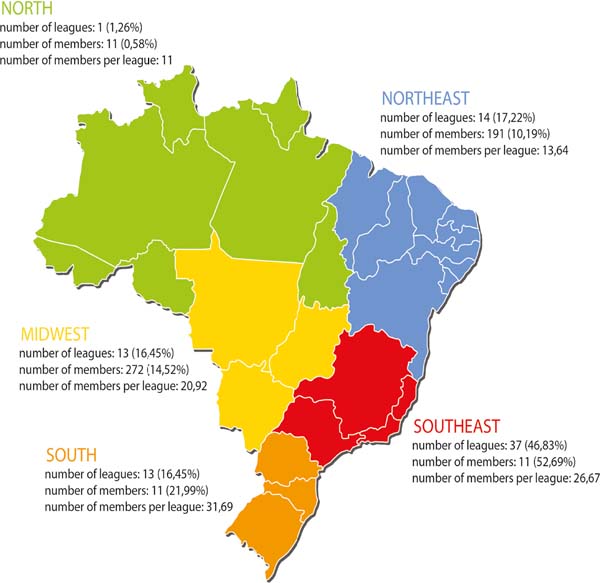

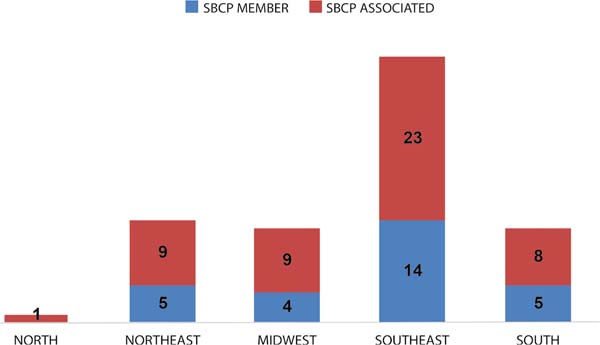

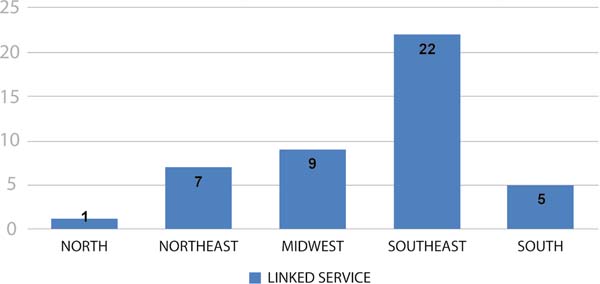





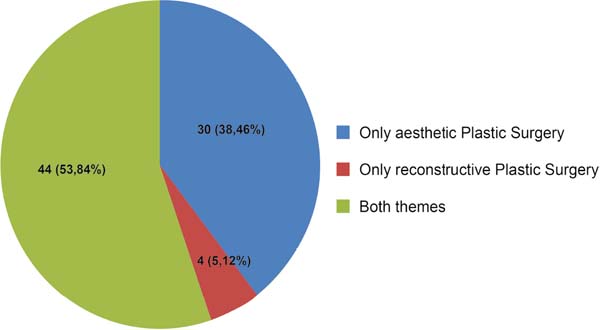

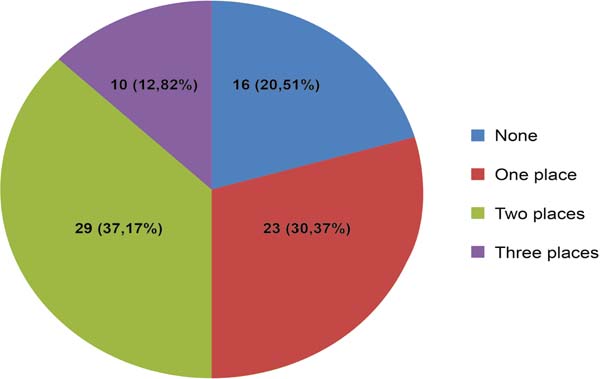

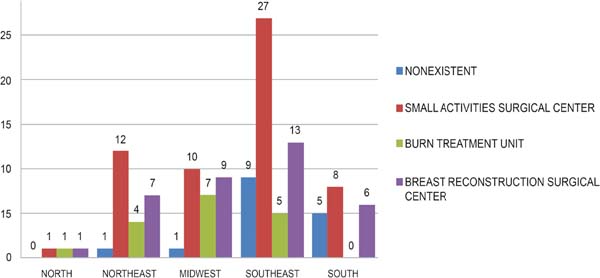

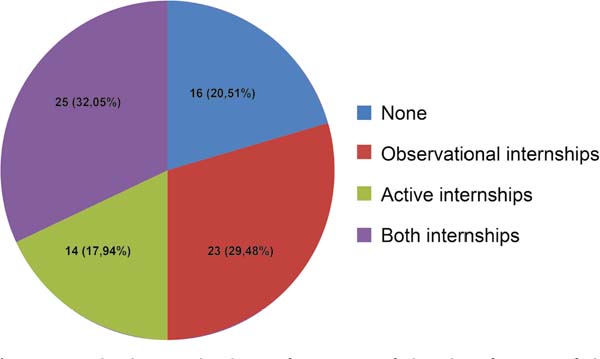

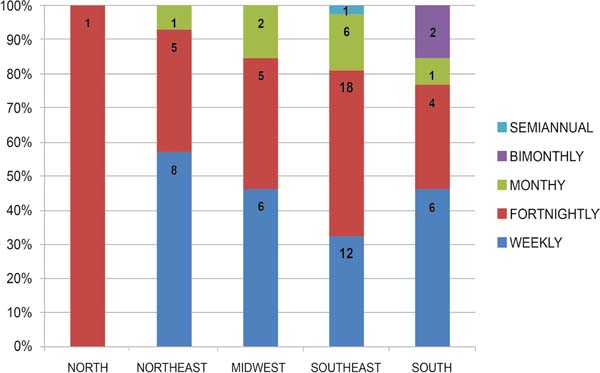



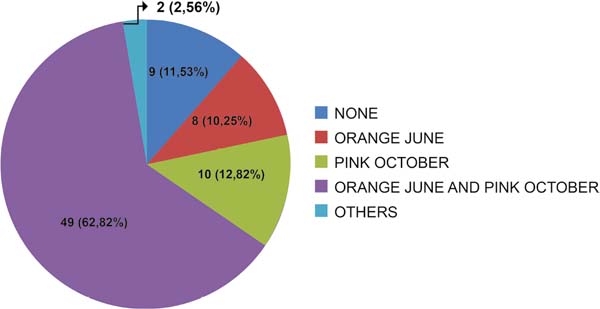


 Read in Portuguese
Read in Portuguese
 Read in English
Read in English
 PDF PT
PDF PT
 Print
Print
 Send this article by email
Send this article by email
 How to Cite
How to Cite
 Mendeley
Mendeley
 Pocket
Pocket
 Twitter
Twitter